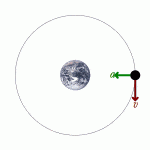Types Of Musical Instruments
What type of musical instruments are there? There are very many musical instruments in the music industry. They can be classified with regard to various factors such how they are played. Primarily, there are three types of musical instruments:
– The percussion family
– The wind family
– The string family
The percussion family
There are the widely used types of musical instruments. Examples of musical instruments in this category include the drum. Other examples are the xylophone, the table, the bells, the cymbals, the marimba, the nagara etc. In these types of musical instruments, sound is produced by either striking or beating the instrument surface which generate vibrations of the desired sound note. They are further classified as pitched or unpitched percussion. The note produced by the pitched instruments can be identified while the notes produced by the unpitched cannot be identified. The sound produced will depends on how the surface of the instrument is struck and the exact points struck.
The string family
These types of musical instruments depend entirely on string vibration to produce sound. The sound produced depends on both the length of the string and the thickness of the string. Some common examples of string instruments include the guitar, the sitar, the harp, the sarod, the santor, the mandolin, the double bass etc.
These types of musical instruments can further be classified in three distinct classes. These include the lutes, the harps and the zithers. This classification is based on how the string is placed on the musical instrument.
A guitar is a good example of lutes string instruments. The harps have string placed within the frame while in the zithers have the string placed on the instrument’s body. The playing mechanisms include plucking for the case of a guitar, blowing for the case of violin and striking. String instruments, just like the percussion instruments are widely used in music industry.
The wind family
These types of musical instruments are played through blowing the air into the air column in the tube. When air is blown, a sound is produced however the pitch of the sound produced will always depend on the length of the tube. Shorter air columns will always produce a higher pitch as compared to the shorter air column which produces. Examples of different types of musical instruments in this category include the flute, the English horn, the oboe, the pianica, the Bagpipe etc.
These types of instruments can further be classified as the brass instruments or the Woodwind instruments. This classification is depends on how the player produces sound. In brass instruments, vibration of air within the instrument is due to vibration of the lips. Changing of the air column is normally done by use of a sliding mechanism or by use of valves. They are mostly used in jazz music and they include the trombone, the trumpet, the cimbasso etc.
In the woodwind types of musical instruments, sound vibrations are either produced by blowing air across the holes e.g. flutes or blowing against the edge.
The advancement in technology most of these types of musical instruments being operated by electricity and thus another category of instruments called the electronic instruments.






